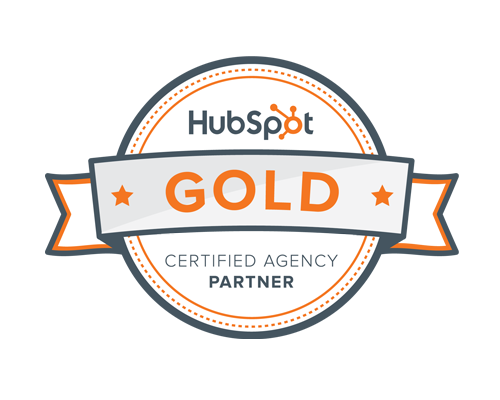
9 Email Marketing Best Practices (For Startups)
When was the last time you reviewed your email marketing strategy?
It’s an important question and one that should not be ignored, especially in a startup organization. Email marketing is more than just another marketing channel to maintain. With 37% of brands increasing their email marketing budgets, there’s much more to the story.
But how can you consider investing more if you’re not even sure where you need improvement? It’s a fair question, and one we’ll answer by the end of this blog with actionable tips and informative insights.
Before you begin a comprehensive audit of your current email marketing strategy, you first need to understand exactly what you should be optimizing. Let’s get right into it.
1. Clear Subject Lines, Not Clever Wordplay
Let’s start at the very top with the crafting of an enticing subject line.
As a startup organization, you may think it’s impossible to compete with the open rates larger companies in your industry garner. Sure, it can be challenging—but not impossible. It all starts with an optimized subject line. To maximize your chances of getting that open, your subject line should:
- Give the reader just enough info to want to read more (make them curious)
- Accurately reflect what’s inside the email (no bait and switch)
- Not contain any obvious spelling errors or spam-triggering words
- Be clear and direct, not clever or savvy
Pique their curiosity just enough, and you’ll see a great improvement—not only open rates but also click-through rates as well. Here’s a quick example for illustration:
Bad: I bet you’ll love this…
Good: Our new feature will increase your conversion rate

2. Complement Your Subject Lines
Moving down the list, let’s talk about the preview text. This is the small snippet of text you see beneath the subject line with some email providers, like Gmail.
Your preview text should complement your subject line—not replace it. Add in more details about what the reader can expect upon opening without revealing your big takeaways. This means TLDR (Too long, didn’t read) summaries! Check with your provider on character lengths as well. Here’s an example:
Bad: Just wait until you read this!
Good: With the addition of this feature to our platform suite, you’ll be able to increase your conversions with little effort.
Also, be sure to check with your email provider on your preview text character length. Here are what some top platforms recommend:
- HubSpot - 50 characters
- MailChimp - 60 characters
- ConstantContact - 90 characters
3. Body Copy Messaging
A quick note on body copy—when crafting your core message of the email, keep this expression top of mind:
“I’m writing to ONE reader, conveying ONE message, and driving them to take ONE action.”
Don’t leave your reader guessing what action they should take. Keep your messaging short, clear, and to the point. People are busy and want to digest their information as quickly as possible. You only have around 8 seconds of your reader’s attention before they move on, so be sure and make every word count.
Therefore, it's much better to err on the side of brevity than trying to cram too much information into a single email—that’s what campaigns are for.

4. Time to Hit Send
Now that you know how to craft enticing emails, it’s time to develop a sending routine so your subscribers know when to expect you.
At first, you won’t have enough data to determine the best times to send out your emails. Luckily, this article by Moosend determined the best days to send an email were on Thursday and Tuesday—and avoiding Saturday and Sunday. Between 8 and 9 AM proved to be the best time to hit send. Though the time zone will depend on your audience's demographics.
You’ll want to tailor your schedule based on analytics once you have built up a good database. But for now, these are a good starting point.
5. Make it Simple to Unsubscribe
Let’s be honest for a second. No matter how awesome your content is, the truth is some users will want to unsubscribe. And sometimes, you’ll want them to! If a contact in your database simply isn’t a best-fit customer for your business, why waste your time and marketing dollars trying to connect with them?
It’s a subscriber’s right to unsubscribe. Part of running good-performing email campaigns is losing the unresponsive contacts, since they are no longer engaged with your offers. So while it may feel counterintuitive, ensure your readers have quick and easy access to unsubscribing. Not doing so is also illegal, since the implementation of the CAN-SPAM law that was enacted in 2003. This law grants users the right to opt out of commercial email communications at any time.
Now, you won’t have to worry about triggering spam reports that could destroy your domain in the long run—or wind up having to pay a hefty fine for failing to comply.
6. Segment Your Audience
As your contact database grows (along with your startup), you’ll need to segment your audience. Segmentation is a critical step to send targeted messages to subsets of your audience based on significant buyer characteristics. In fact, 78% of marketers believe list segmentation is one of the most effective email marketing strategies.
Segmenting your database based on buyer personas will help organize your efforts and allow for personalized targeting. For example, someone who bought a pencil from you might not be interested in the paintbrush you also sell (poor example, but you get it—right?).
Getting as granular as possible in your list segmentation will lead to more successful campaign results. Not to mention, separating your lists will ensure the right messaging lands in the right inboxes at the right time. By sending personalized and relevant emails, the probability of an email recipient engaging with your content increases. From here, you can leverage lead scoring tactics to collect as much data as possible from leads by assigning points for each behavioral action (like viewing a blog or downloading an ebook). This will help you qualify and prioritize leads. Sounds like a win-win, doesn’t it?
7. Email Nurture Campaigns
When a new subscriber opts into your email list, you should have an appropriate welcome email (or sequence of emails) waiting to greet them. This email should be short and sweet, but also inform them of what they can expect from you in future emails. If you offered an incentive in exchange for their email address, this is the place you would make good on that promise.
This framework is absolutely crucial for laying a positive foundation and starting on the right foot with each new subscriber.
Once you have your leads segmented and welcome emails sent, you can then look ahead to lead nurturing campaigns. These campaigns are designed to focus on building relationships with potential customers who have yet to purchase from you. You’ll want to ensure that each email you send provides value and restates the benefits of your offer. Then you can watch your leads blossom into loyal customers.
8. Mobile Optimization
Don’t forget about smartphone users!
Four out of ten emails are opened through mobile apps—and it’s only trending higher. You don’t want to inadvertently put off readers who are having to “pinch and zoom” trying their best to see what the email says. Especially if your target audience is geared toward millennials, as 59% of them primarily use their smartphone to check their email.
Give them little to no resistance and boost your performance data by making your campaigns mobile-friendly.
9. Perform Routine Database Audits
Lastly, you’ll want to properly clean and maintain your email list.
It’s not important how many subscribers you have. It only matters that your audience is active. An engaged list can increase your deliverability rate as they happily open, click, or reply to your messages when prompted. If you have a list of people who haven’t opened a single email in months, the contrary can happen.
You can run targeted campaigns to wake up these individuals. Conversely, you can simply remove them to ensure you have a healthy and active database.

Should You Outsource Your Email Marketing?
While remaining consistent with email marketing best practices is no simple task, it becomes much easier when you build that muscle over time.
If you are strapped for time and lack the necessary resources as a startup, that’s completely understandable. But it doesn’t mean you should sacrifice this coveted marketing channel.
There are other options out there specifically for you like outsourcing your email marketing to a third-party agency. With a proven agency at your side, industry experts will begin analyzing your audience, market, and strategy points to craft compelling campaigns that:
- Improve brand awareness
- Nurture captured leads
- Increase conversion rates
So don’t feel overwhelmed, but you should consider prioritizing your email marketing strategy sooner than later. Consider meeting with some agencies to see who would be a good fit for your marketing efforts.

Final Thoughts
With email marketing expected to reach 17.9 billion in revenue by 2027, to neglect it is to ignore your startup's full potential.
Should you be in a situation where you don’t have the time or resources necessary, we’re here to help. We have a team of industry experts, trained in email marketing best practices and ready to hit the ground running for you right away. Want to experience the Möve difference? Let’s have a quick chat to see what we could do for you.




